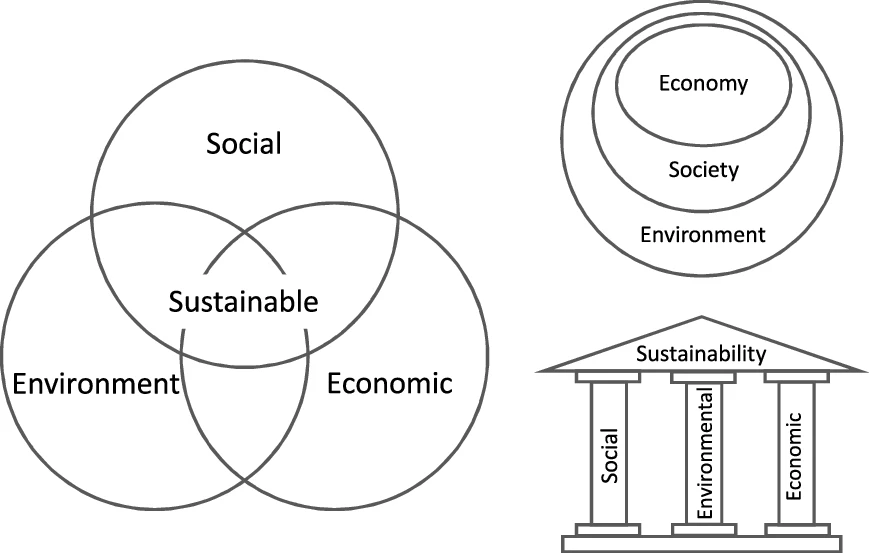|
Law And Government Of Minneapolis, Minnesota
Minneapolis, the largest city in Minnesota, United States, and the county seat of Hennepin County, operates under a Mayor–council government system. This article provides an overview of the structure and functions of Minneapolis's Local government, city government. Charter and ordinances Minnesota was the fourth state in the U.S. to permit "Home rule in the United States, home rule" in 1896. A home rule charter serves as a constitution for a local government. It allows a community to establish and maintain a municipal corporation to provide for the common health, safety, and welfare. Several early attempts to establish a home rule charter in Minneapolis failed. In 1920, the matter was resolved by the Minnesota State Legislature when it codified the general Minnesota Statutes, statutes applicable to first class cities as well as all special laws specific to the City of Minneapolis at that time into the City’s first home rule charter. That charter remained in effect—through m ... [...More Info...] [...Related Items...] OR: [Wikipedia] [Google] [Baidu] |
Minneapolis City Hall Circa 1900
Minneapolis is a city in Hennepin County, Minnesota, United States, and its county seat. With a population of 429,954 as of the 2020 United States census, 2020 census, it is the state's List of cities in Minnesota, most populous city. Located in the state's center near the eastern border, it occupies both banks of the Upper Mississippi River and adjoins Saint Paul, Minnesota, Saint Paul, the state capital of Minnesota. Minneapolis, Saint Paul, and the surrounding area are collectively known as the Minneapolis–Saint Paul, Twin Cities, a metropolitan area with 3.69 million residents. Minneapolis is built on an artesian aquifer on flat terrain and is known for cold, snowy winters and hot, humid summers. Nicknamed the "City of Lakes", Minneapolis is abundant in water, with list of lakes in Minneapolis, thirteen lakes, wetlands, the Mississippi River, creeks, and waterfalls. The city's public park system is connected by the Grand Rounds National Scenic Byway. Dakota people orig ... [...More Info...] [...Related Items...] OR: [Wikipedia] [Google] [Baidu] |
Cycling
Cycling, also known as bicycling or biking, is the activity of riding a bicycle or other types of pedal-driven human-powered vehicles such as balance bikes, unicycles, tricycles, and quadricycles. Cycling is practised around the world for purposes including transport, recreation, exercise, and competitive sport. History Cycling became popularized in Europe and North America in the latter part and especially the last decade of the 19th century. Today, over 50 percent of the human population knows how to ride a bike. War The bicycle has been used as a method of reconnaissance as well as transporting soldiers and supplies to combat zones. In this it has taken over many of the functions of horses in warfare. In the Second Boer War, both sides used bicycles for scouting. In World War I, France, Germany, Australia and New Zealand used bicycles to move troops. In its 1937 invasion of China, Japan employed some 50,000 bicycle troops, and similar forces were instrumental in ... [...More Info...] [...Related Items...] OR: [Wikipedia] [Google] [Baidu] |
Internship
An internship is a period of work experience offered by an organization for a limited period of time. Once confined to medical graduates, internship is used to practice for a wide range of placements in businesses, non-profit organizations and government agencies. They are typically undertaken by students and graduates looking to gain relevant skills and experience in a particular field. Employers benefit from these placements because they often recruit employees from their best interns, who have known capabilities, thus saving time and money in the long run. Internships are usually arranged by third-party organizations that recruit interns on behalf of industry groups. Rules vary from country to country about when interns should be regarded as employees. The system can be open to exploitation by unscrupulous employers. Internships for professional careers are similar in some ways. Similar to internships, apprenticeships transition students from vocational school into the workfo ... [...More Info...] [...Related Items...] OR: [Wikipedia] [Google] [Baidu] |
Workforce Development
Workforce development, an American approach to economic development, attempts to enhance a region's economic stability and prosperity by focusing on people rather than businesses. It essentially develops a human-resources strategy. Work-force development has evolved from a problem-focused approach, addressing issues such as low-skilled workers or the need for more employees in a particular industry, to a holistic approach considering participants' many barriers and the overall needs of the region. Work-force development has historically occurred in two forms: place-based strategies that attempt to address the needs of people living in a particular neighborhood, and sector-based strategies that focus on matching workers' skills to needs in an industry already present in the region. Across both approaches, themes for best practices have emerged. Successful workforce development programs (WDPs) typically have a strong network of ties in a community, and are equipped to respond to c ... [...More Info...] [...Related Items...] OR: [Wikipedia] [Google] [Baidu] |
Section 8 (housing)
Section 8 of the Housing Act of 1937 (), commonly known as Section 8, provides rental housing assistance to low-income households in the United States by paying private landlords on behalf of these tenants. Approximately 68% of this assistance benefits seniors, people in families with children, and individuals with disabilities. The Department of Housing and Urban Development (HUD) oversees Section 8 programs, which are administered locally by public housing agencies (PHAs). In 2022, about 2.3 million out of the 5.2 million households receiving rental assistance used Section 8 vouchers. While landlord participation in the program is voluntary in most areas, some states and municipalities have enacted laws that prohibit source of income discrimination, including discrimination against individuals whose income is derived from Section 8 housing vouchers. Voucher amounts vary depending on city or county, size of unit, and other factors. Voucher recipients typically have two to ... [...More Info...] [...Related Items...] OR: [Wikipedia] [Google] [Baidu] |
Public Housing
Public housing, also known as social housing, refers to Subsidized housing, subsidized or affordable housing provided in buildings that are usually owned and managed by local government, central government, nonprofit organizations or a combination thereof. The details, terminology, definitions of poverty, and other criteria for allocation may vary within different contexts, but the right to renting, rent such a home is generally rationed through some form of means-testing or through administrative measures of housing needs. One can regard social housing as a potential remedy for housing inequality. Within the OECD, social housing represents an average of 7% of national housing stock (2020), ranging from ~34% in the Netherlands to less than 1% in Colombia. In the United States, public housing developments are classified as housing projects that are owned by a housing authority or a low-income (project-based voucher) property. PBV are a component of a public housing agenc ... [...More Info...] [...Related Items...] OR: [Wikipedia] [Google] [Baidu] |
Americans With Disabilities Act Of 1990
The Americans with Disabilities Act of 1990 or ADA () is a civil rights law that prohibits discrimination based on disability. It affords similar protections against discrimination to Americans with disabilities as the Civil Rights Act of 1964, which made discrimination based on Race (classification of human beings), race, religion, gender, sex, national origin, and other characteristics illegal, and later sexual orientation and gender identity. In addition, unlike the Civil Rights Act, the ADA also requires covered employers to provide reasonable accommodations to employees with disabilities, and imposes accessibility requirements on Public accommodations in the United States, public accommodations. In 1986, the National Council on Disability had recommended the enactment of an Americans with Disabilities Act and drafted the first version of the bill which was introduced in the United States House of Representatives, House and United States Senate, Senate in 1988. A broad bipart ... [...More Info...] [...Related Items...] OR: [Wikipedia] [Google] [Baidu] |
Senior Citizen
Old age is the range of ages for people nearing and surpassing life expectancy. People who are of old age are also referred to as: old people, elderly, elders, senior citizens, seniors or older adults. Old age is not a definite biological stage: the chronological age denoted as "old age" varies culturally and historically. Some disciplines and domains focus on the aging and the aged, such as the organic processes of aging (senescence), medical studies of the aging process (gerontology), diseases that afflict older adults ( geriatrics), technology to support the aging society (gerontechnology), and leisure and sport activities adapted to older people (such as senior sport). Older people often have limited regenerative abilities and are more susceptible to illness and injury than younger adults. They face social problems related to retirement, loneliness, and ageism. In 2011, the United Nations proposed a human-rights convention to protect old people. History European The ... [...More Info...] [...Related Items...] OR: [Wikipedia] [Google] [Baidu] |
Food System
The term food system describes the interconnected systems and processes that influence nutrition, food, health, community development, and agriculture. A food system includes all processes and infrastructure involved in feeding a population: growing, harvesting, processing, packaging, transporting, marketing, consumption, distribution, and disposal of food and food-related items. It also includes the inputs needed and outputs generated at each of these steps. Food systems fall within agri-food systems, which encompass the entire range of actors and their interlinked value-adding activities in the primary production of food and non-food agricultural products, as well as in food storage, aggregation, post-harvest handling, transportation, processing, distribution, marketing, disposal, and consumption. A food system operates within and is influenced by social, political, economic, technological and environmental contexts. It also requires human resources that provide labor, research a ... [...More Info...] [...Related Items...] OR: [Wikipedia] [Google] [Baidu] |
Environmental Health
Environmental health is the branch of public health concerned with all aspects of the natural environment, natural and built environment affecting human health. To effectively control factors that may affect health, the requirements for a healthy environment must be determined. The major sub-disciplines of environmental health are environmental science, toxicology, environmental epidemiology, and Environmental medicine, environmental and occupational medicine. Definitions WHO definitions Environmental health was defined in a 1989 document by the World Health Organization (WHO) as: Those aspects of human health and disease that are determined by factors in the environment. It is also referred to as the theory and practice of accessing and controlling factors in the environment that can potentially affect health. A 1990 WHO document states that environmental health, as used by the WHO Regional Office for Europe, "includes both the direct pathological effects of chemicals, r ... [...More Info...] [...Related Items...] OR: [Wikipedia] [Google] [Baidu] |
Sustainability
Sustainability is a social goal for people to co-exist on Earth over a long period of time. Definitions of this term are disputed and have varied with literature, context, and time. Sustainability usually has three dimensions (or pillars): environmental, economic, and social. Many definitions emphasize the environmental dimension. This can include addressing key environmental problems, including climate change and biodiversity loss. The idea of sustainability can guide decisions at the global, national, organizational, and individual levels. A related concept is that of sustainable development, and the terms are often used to mean the same thing. UNESCO distinguishes the two like this: "''Sustainability'' is often thought of as a long-term goal (i.e. a more sustainable world), while ''sustainable development'' refers to the many processes and pathways to achieve it." Details around the economic dimension of sustainability are controversial. Scholars have discussed this under ... [...More Info...] [...Related Items...] OR: [Wikipedia] [Google] [Baidu] |







